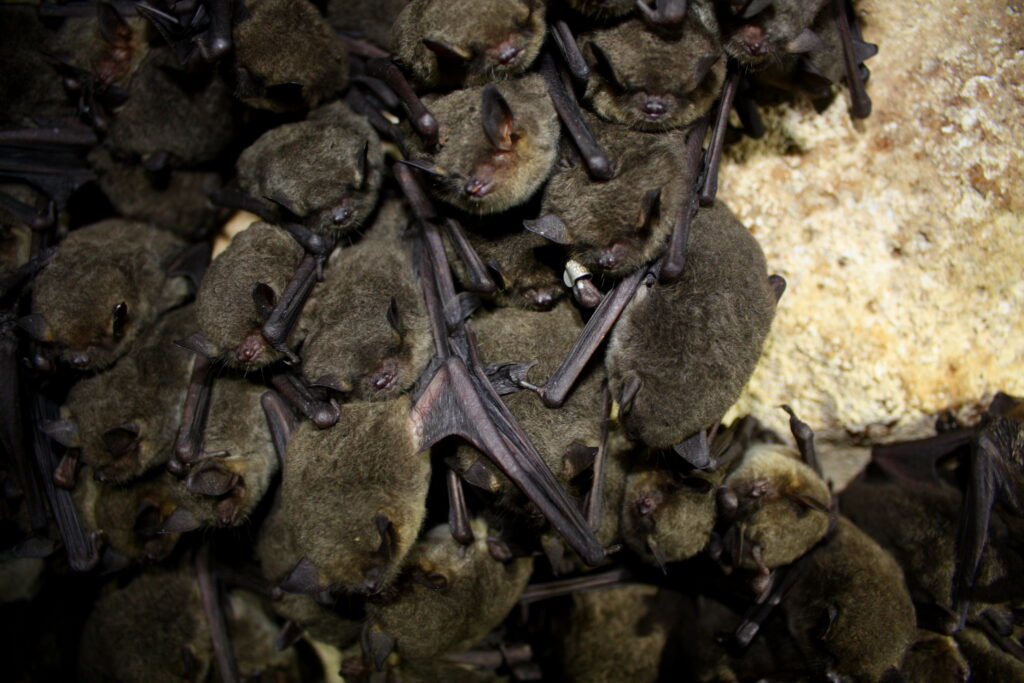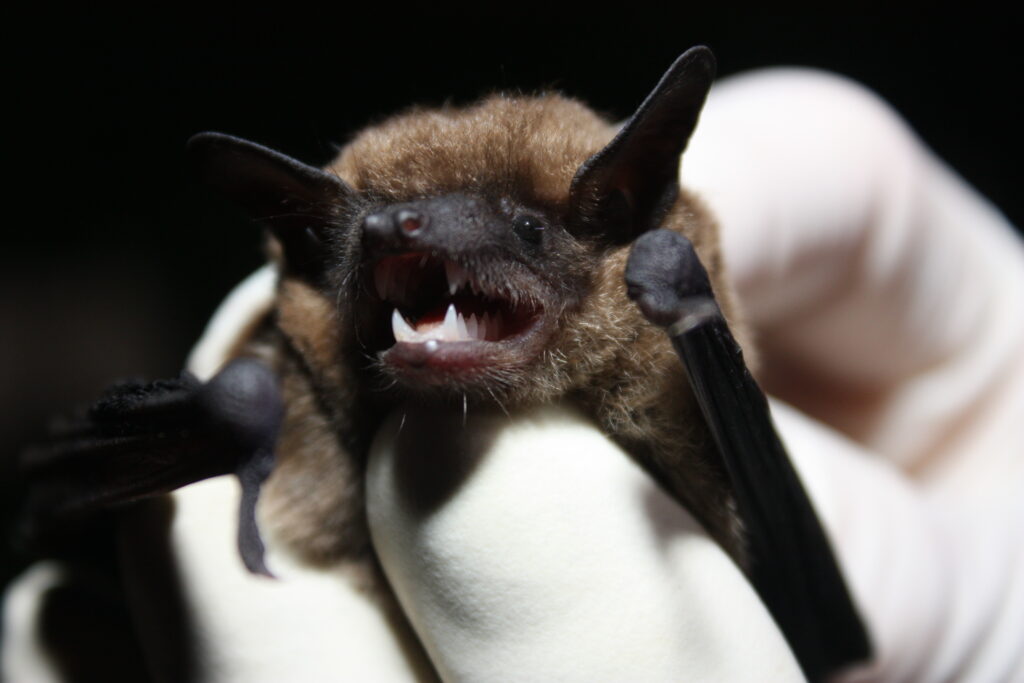What Attracts Bats?
When looking for a home, bats search for a warm space near a food source and away from predators. These creatures frequently inhibit attics because they provide everything a bat needs to survive. Follow along below to learn more about why bats are hanging around your property.
Why Are Bats Attracted To Attics?

There are only a couple of reasons why bats might be present in or around your home. They choose to live with humans for three reasons, just like any other wild animal or household pest: Food, shelter, and water. If they’ve chosen your attic or outbuilding as a roosting spot, it’s because they’ve discovered a plentiful food source in your home or property. To put it another way, if you see bats around your house, you might have a pest problem.
Bats are also commonly found in attics during their breeding season. An attic provides shelter from the weather and protection against predators. If left undisturbed, the bats will continue to use your attic and reproduce rapidly.
What Does A Bat Eat?
 A Michigan bat’s diet consists of moths, flies, beetles, and other insects. They can catch 600 to 1,000 mosquito-sized insects per hour when feeding in normal conditions. Large insect populations on your property will provide an able food supply for any bat species. 1Go To Source michigan.gov -“Bats”
A Michigan bat’s diet consists of moths, flies, beetles, and other insects. They can catch 600 to 1,000 mosquito-sized insects per hour when feeding in normal conditions. Large insect populations on your property will provide an able food supply for any bat species. 1Go To Source michigan.gov -“Bats”
To locate and capture prey, bats use echolocation. They produce high-frequency sound pulses (20-130 kHz) that reverberate off nearby objects. The bats then use the echoes to figure out how far away the object is and its size and shape. Bats have evolved to fly at night and navigate in complete darkness, easily avoiding even the thinnest wire obstacles in their path.
What Is A Bat’s Typical Habitat?
The presence of suitable roosts is one of the most important aspects of a bat’s habitat. There are three types of roosts used by bats: day, night, and hibernation roosts. For a location to serve as a roost, the air temperature must be consistent throughout the day. Attics are suitable roosting habitats because they provide a consistent temperature. Active bats use both day and night roosts. These roosts can be found in various places, including buildings, trees, rocks, and woodpiles.
Night roosts have enclosed spaces where a large number of bats can congregate. This aids in keeping the roost warm. When the temperature drops below 60°F, bats use night roosts. These roosts are typically not found near day roosts. During the spring, summer, and fall, day and night roosts are used. Little brown bats hibernate in hibernaculum sites during the winter. 2Go To Source biokids.umich.edu -“Little brown bat”
When Will Bats Reproduce?
 When males begin to swarm near hibernacula in late summer or early fall, bat breeding season begins. Females store sperm during hibernation until spring after copulation. They emerge from hibernacula in the spring, ovulate, and the stored sperm fertilizes an egg. This method is known as delayed fertilization. 3Go To Source fws.gov -“Northern Long-Eared Bat Myotis septentrionalis”
When males begin to swarm near hibernacula in late summer or early fall, bat breeding season begins. Females store sperm during hibernation until spring after copulation. They emerge from hibernacula in the spring, ovulate, and the stored sperm fertilizes an egg. This method is known as delayed fertilization. 3Go To Source fws.gov -“Northern Long-Eared Bat Myotis septentrionalis”
Pregnant females migrate to summer areas after fertilization, where they roost in small colonies and give birth to a single pup. At the beginning of the summer, maternity colonies of females and young usually have 30 to 60 bats, though larger maternity colonies have been seen. From pregnancy to post-lactation, the number of bats in roosts usually decreases. Most bats in a maternity colony give birth simultaneously, which can be anywhere from late May to late July, depending on where the colony is located within the species’ range. By 18 to 21 days after birth, young bats can fly.
How Can I Deter Bats From My Property?
There are no effective bat repellents on the market. A common misconception is that mothballs and ultrasonic noise machines will deter bats. Many repellents available in hardware stores claim to resolve any bat issue, but that is simply untrue. The same can be said for those ultrasonic high-pitch noise machines. Rather than wasting money on ineffective deterrents, contacting a bat control expert is the most efficient way to prevent bats from hanging around your property.
Bat exclusion professionals will be able to identify what is attracting the bats and devise a plan to deter the flying critters. Wildlife technicians also come with decades of experience and a trained eye for attractants that the average person wouldn’t be able to identify.
Sources:
- “Bats.” Michigan DNR, www.michigan.gov/dnr/0,4570,7-350-79135_79218_79619_84901—,00.html. Accessed 8 July 2021.
- Havens, A. 2006. “Myotis lucifugus” (On-line), Animal Diversity Web. Accessed July 08, 2021 at http://www.biokids.umich.edu/accounts/Myotis_lucifugus/
- U.S. Fish and Wildlife Service. “Northern Long-Eared Bat| Fish and Wildlife Service.” Fish And Wildlife Service, www.fws.gov/midwest/endangered/mammals/nleb/nlebfactsheet.html. Accessed 8 July 2021.
Professional Bat Control
We’re Just A Call Away
Click To Call
